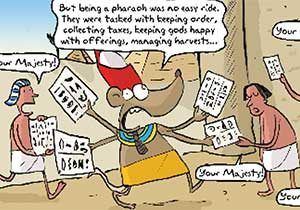
English Story framework: Writing dialogue
Practise creating and writing dialogue in stories using this simple framework
The primary resource available to download here has been supplied by Jolly Learning; creators of Jolly Phonics products.
Practise creating stories with dialogue in them using the colourful illustration to prompt with ideas for plot and characterisation. Help children develop expression in their writing while giving them an opportunity to work on their spelling, punctuation and grammar.
Activity: Ask the children to complete the free downloadable story worksheet.
The teaching resource can be used as a printed handout, for pupils to use in pairs, or as a class exercise, with the final result displayed on the interactive whiteboard for class discussion.
N.B. The following information for mapping the resource documents to the school curriculum is specifically tailored to the English National Curriculum and Scottish Curriculum for Excellence. We are currently working to bring specifically tailored curriculum resource links for our other territories; including South Africa, Australia and New Zealand. If you have any queries about our upcoming curriculum resource links, please email: schools@ngkids.co.uk
This English primary resource assists with teaching the following Key Stage 1 English (Year 1) objectives from the National Curriculum:
Pupils should be taught to: write sentences by:
- saying out loud what they are going to write about
- composing a sentence orally before writing it
- sequencing sentences to form short narratives
- re-reading what they have written to check that it makes sense
- discuss what they have written with the teacher or other pupils
- read aloud their writing clearly enough to be heard by their peers and the teacher
National Curriculum Key Stage 1 English (Year 2) objective:
Pupils should be taught to:
develop positive attitudes towards and stamina for writing by:
- writing narratives about personal experiences and those of others (real and fictional)
- writing for different purposes
consider what they are going to write before beginning by:
- planning or saying out loud what they are going to write about
- writing down ideas and/or key words, including new vocabulary
- encapsulating what they want to say, sentence by sentence
make simple additions, revisions and corrections to their own writing by:
- evaluating their writing with the teacher and other pupils
- re-reading to check that their writing makes sense and that verbs to indicate time are used correctly and consistently, including verbs in the continuous form
- proof-reading to check for errors in spelling, grammar and punctuation [for example, ends of sentences punctuated correctly]
- read aloud what they have written with appropriate intonation to make the meaning clear
learn how to use:
- sentences with different forms: statement, question, exclamation, command
- expanded noun phrases to describe and specify [for example, the blue butterfly]
- the present and past tenses correctly and consistently including the progressive form
- subordination (using when, if, that, or because) and co-ordination (using or, and, or but)
This English primary resource assists with teaching the following Literacy and English Early level objectives from the Scottish Curriculum for Excellence:
- I enjoy exploring events and characters in stories and other texts and I use what I learn to invent my own, sharing these with others in imaginative ways.
- Within real and imaginary situations, I share experiences and feelings, ideas and information in a way that communicates my message.
- I enjoy exploring events and characters in stories and other texts and I use what I learn to invent my own, sharing these with others in imaginative ways.
Scottish Curriculum for Excellence First level Literacy and English objectives:
- I can write independently, use appropriate punctuation and order and link my sentences in a way that makes sense.
- Throughout the writing process, I can check that my writing makes sense.
- By considering the type of text I am creating, I can select ideas and relevant information, organise these in a logical sequence and use words which will be interesting and/or useful for others.
- By considering the type of text I am creating,6 I can select ideas and relevant information, organise these in a logical sequence and use words which will be interesting and/or useful for others.
Scottish Curriculum for Excellence Second level Literacy and English objectives:
- I can select ideas and relevant information, organise these in an appropriate way for my purpose and use suitable vocabulary for my audience.
- In both short and extended texts, I can use appropriate punctuation, vary my sentence structures and divide my work into paragraphs in a way that makes sense to my reader. <
- Throughout the writing process, I can check that my writing makes sense and meets its purpose.
- I can convey information, describe events, explain processes or combine ideas in different ways.
Download primary resource
More Like

Steve Backshall interview!

All about Kew’s Millennium Seed Bank!

LIVE LIFE TO THE FULLEST WITH SPARK POP!









LEAVE A COMMENT
THANK YOU
Your comment will be checked and approved shortly.
WELL DONE,
YOUR COMMENT
HAS BEEN ADDED!
COMMENTS
CUSTOMIZE YOUR AVATAR